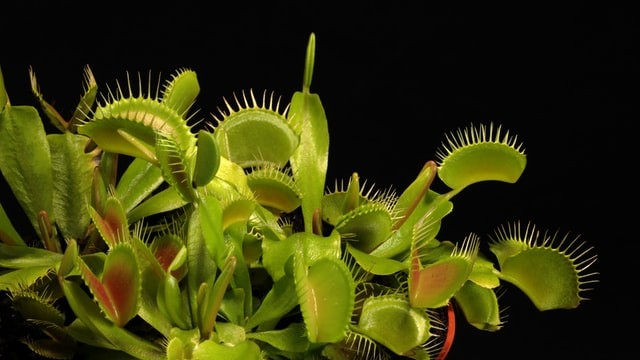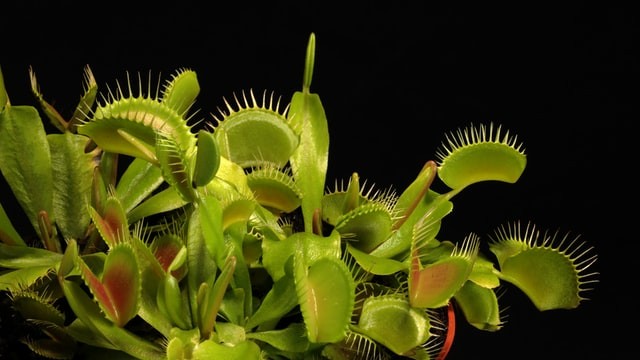For more than a century, insect-eating plants have captivated biologists, but how plants gained the capacity to catch and eat live prey has mostly remained a mystery.
Scientists from Salk and Washington University in St. Louis have now studied the molecular underpinnings of plant carnivory and discovered evidence that it developed from defense mechanisms used by plants.
How Carnivorous Plants Developed from Defense Mechanisms (Photo : Andi Superkern/Unsplash)
(Photo : Andi Superkern/Unsplash)
The study described how calcium molecules move dynamically within cells in the leaves of carnivorous plants in reaction to touch from living prey.
It was published on July 11 in Proceedings of the National Academy of Sciences (PNAS).
Changing calcium levels cause leaves to move in order to grab prey, perhaps by producing more defense-related hormones, as per ScienceDaily
The information advances scientists' knowledge of how plants interact with their surroundings.
In order to live in nutrient-poor environments, plants like the spoon-leaved sundew (Drosera spatulata) probably evolved carnivory.
However, because sundews are difficult to produce and their DNA has only recently been decoded, researchers have had trouble understanding how carnivory functions at the cellular level.
Additionally, they were unaware of how carnivorous plants evolved prey-capture-related characteristics including leaf motion and the release of digesting enzymes.
Carl Procko, the co-first author of the research and a staff scientist in Salk's Plant Molecular and Cellular Biology Laboratory, asserted that carnivorous sundew plants are not model organisms.
The scientists had to learn new procedures to closely investigate the plants because only a small number of labs throughout the world had previously been able to genetically change them.
To conduct this work, the researchers used genetic methods to visualize the dynamic changes in calcium molecules in the leaves as insect prey touched down on them and were subsequently trapped by sticky secretions.
Calcium signaling is essential for non-carnivorous plants in several ways, including activating the jasmonate defense pathway to ward off pest insects.
Electrical activity, a crucial component of prey capture in some carnivorous plants, including sundews, is similarly reacted to by jasmonic acid.
The researchers wondered if the carnivorous habit of the sundew would also require this similar defense mechanism found in non-carnivorous plants.
The team discovered that as the leaf bent inward, encasing the insect in digestive secretions, changes in calcium within the plant cell were necessary for the activation of genes generally targeted by jasmonic acid.
Sundew leaves exhibited less bending when offered non-living prey and when their calcium channels were blocked, according to the researchers.
These results support the hypothesis that jasmonic acid is involved in insect digestion and show how calcium facilitates insect prey-capture reflexes.
Also Read: Carnivorous Plant Gives Unique Insight on 'Junk' DNA
The Evolution of Carnivorous Plants
The evolution of generally mild-mannered floral plants into homicidal meat-eaters is one of botany's greatest unanswered mysteries, and carnivorous plants are currently experiencing another major turning point, as per the Smithsonian Magazine
More recently, developments in molecular science have aided researchers in understanding crucial mechanisms underlying the carnivorous lifestyle, such as how a flytrap snaps so quickly and transforms into an "intestine" to absorb its prey's leftovers after crushing insects.
But the fundamental question remained: how did evolution give these meat-eating dietary outlaws the ability to do so?
Despite being strange, carnivory has undergone numerous evolutionary changes during the more than 140 million years that flowering plants have existed.
According to Tanya Renner, an evolutionary biologist at Penn State, the adaption appeared independently at least 12 times.
The necessity to discover a different supply of essential nutrients catalyzed evolution each time.
Carnivorous plants thrive in ecosystems deficient in the nitrogen and phosphorus necessary for growth, such as swamps and bogs, nutrient-poor bodies of water, and thin tropical soils.
Both, as well as other nutrients plants, require to thrive, are abundant in insects and other tiny invertebrates that are high in protein.
Many aspects of the carnivorous way of life are still guarding their genetic secrets.
However, research on two of its most gruesome components-digestion and absorption-is showing how evolution repurposed already-existing genes, giving some new jobs to do while giving others new functions and the occasional change to better fit their new responsibilities.
The same genes have frequently been reused in plants that separately developed carnivory.
Beyond digestion, evolution has a propensity to acquire and modify existing tools.
The trap must transfer the smaller molecules created as chitin, proteins, and DNA are broken down from the outside environment to the interior of the plant.
Related Article: Taste for Meat: Scientists Trace Genetic Route of Carnivorous Plants
© 2024 NatureWorldNews.com All rights reserved. Do not reproduce without permission.


![Tsunami Hazard Zones: New US Map Shows Places at Risk of Flooding and Tsunamis Amid Rising Sea Levels [NOAA]](https://1471793142.rsc.cdn77.org/data/thumbs/full/70325/280/157/50/40/tsunami-hazard-zones-new-us-map-shows-places-at-risk-of-flooding-and-tsunamis-amid-rising-sea-levels-noaa.jpg)



